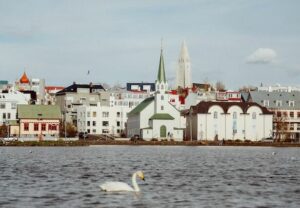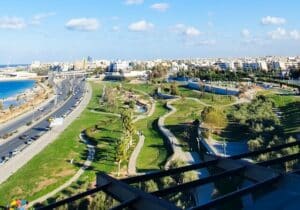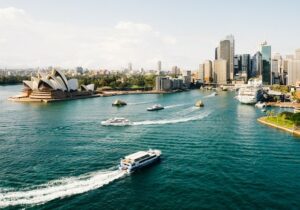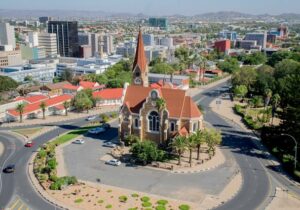
Population density is the measure of people living per unit area, typically square kilometers or square miles. It’s crucial for understanding a country’s demographics and lifestyle as it reveals how crowded or spacious an area is, impacting resource allocation, urbanization, infrastructure, and quality of life. High density often implies urbanization and unique societal dynamics, while low density signifies rural areas with distinct lifestyles.
Low population density is also important in terms of preserving natural resources, minimizing environmental impact, and fostering unique cultural aspects. Sparse populations often lead to reduced resource depletion, less pollution, and the preservation of traditional lifestyles and cultural diversity.
In this article, we’ll give an overview of the pros and cons of living in a country with a low population, reasons to consider living in such a country, and an overview of ten of the least populated countries in the world.
Factors Affecting Population Density

In addition, economic opportunities play a crucial role; areas with limited job prospects and industries tend to have lower population densities as people seek better livelihoods elsewhere.
Conversely, regions with robust economies and diverse job markets attract more residents, resulting in higher population densities. Therefore, a complex interplay of geography, climate, and economic factors shapes population density in various regions around the world.
What’s more, low population density factors impact settlement patterns and infrastructure development by limiting urbanization and transportation networks. Sparse populations often result in small, dispersed settlements, making it costly to build and maintain infrastructure like roads and utilities. This can hinder economic growth and access to essential services in sparsely populated areas.
Benefits and Drawbacks of Low Population Density
Benefits of low population density
- Preserved natural environments: Low population density often leads to less urban sprawl, helping preserve natural landscapes and biodiversity.
- Reduced stress on resources: Lower population densities result in less strain on water, energy, and food resources, promoting sustainability.
- Potential for sustainable living: Sparsely populated areas can foster self-sufficiency, with opportunities for eco-friendly practices like farming and renewable energy generation.
Drawbacks of low population density
- Limited access to services: Remote areas may have limited access to healthcare, education, and emergency services, impacting quality of life.
- Fewer economic opportunities: Sparse populations can translate to fewer job options, lower income levels, and reduced economic growth.
- Social isolation: Low population density can lead to social isolation, with fewer opportunities for social interaction and community support.
Technology’s role in bridging gaps
- Telemedicine and e-learning: Technology enables remote access to healthcare and education, mitigating some challenges of low population density.
- Remote work: Digital connectivity allows individuals to work from remote areas, reducing the dependence on traditional job markets.
- Economic diversification: Technology can facilitate e-commerce and online businesses, potentially diversifying economic opportunities in sparsely populated regions.
While low population density offers environmental benefits and sustainable living potential, it also poses challenges related to services and economic opportunities, which can be partially addressed through technological advancements.
Preserving Culture and Tradition

For example, in Bhutan, remote mountain villages sustain their distinctive Bhutanese culture, including elaborate traditional clothing and vibrant festivals like Tshechu. Similarly, in Papua New Guinea, isolated tribes like the Huli people maintain their rich cultural heritage through unique rituals such as the “singsing” gatherings, where they showcase intricate face paint, dance, and music.
Ten Countries with the Lowest Population Density
In the section below, we give a brief overview of the ten least populated countries in the world, including the population density in people per km² (people per square kilometer) and people per m² (people per square mile).
10. Suriname

9. Libya

8. French Guiana

7. Iceland

6. Australia

5. Namibia

It’s also one of the least populated countries, with just three people per km² or nine people per m².
4. Mongolia

With an estimated population of just over three million, Mongolia has a sparse population, namely two people per km² and six people per m².
3. Western Sahara

It is one of the least densely populated countries, with only two people per km² and six people per m².
2. Falkland Islands

Sparsely populated, the average density of the second least populated country is one person per m².
1. Greenland

Why You Should Consider Relocating to a Country with a Low Population Density

What’s more, several immigrant investor programs allow foreign nationals to gain residency or citizenship in countries with a low population density. Canada sits just outside the top ten countries for the lowest population density. It is proactively working to boost its population through visa initiatives like the Startup Visa and Provincial Nominee Programs (PNP).
Frequently Asked Questions About the Least Populated Countries in the World
Which country has the lowest population density in the world?
Greenland, an autonomous territory of Denmark, is the least densely populated country, with a vast land area and a population of only around 56,000 people. Its population density is approximately 0.14 people per km².
Which country has the lowest population density in Asia?
Mongolia, in Central Asia, has the lowest population density in the continent. With a vast land area, its population of approximately three million results in one of the sparsest population densities in Asia.
Which country has the lowest population density in Europe?
The country with the lowest population density in Europe is Iceland. Its rugged landscapes and a population of around 360,000 people make it one of the least densely populated nations on the continent.
Which countries are underpopulated?
Several countries are considered underpopulated due to their vast land areas and low population densities. Examples include Mongolia, Namibia, Australia, Canada, and Greenland, where abundant land outweighs the number of inhabitants.
Does Europe have a high or low population density?
Europe has varying population densities across its countries and regions. Central Europe tends to have higher population densities due to urbanization, while some Northern and Eastern European countries like Norway and Latvia have lower population densities, thanks to vast, less populated areas.



